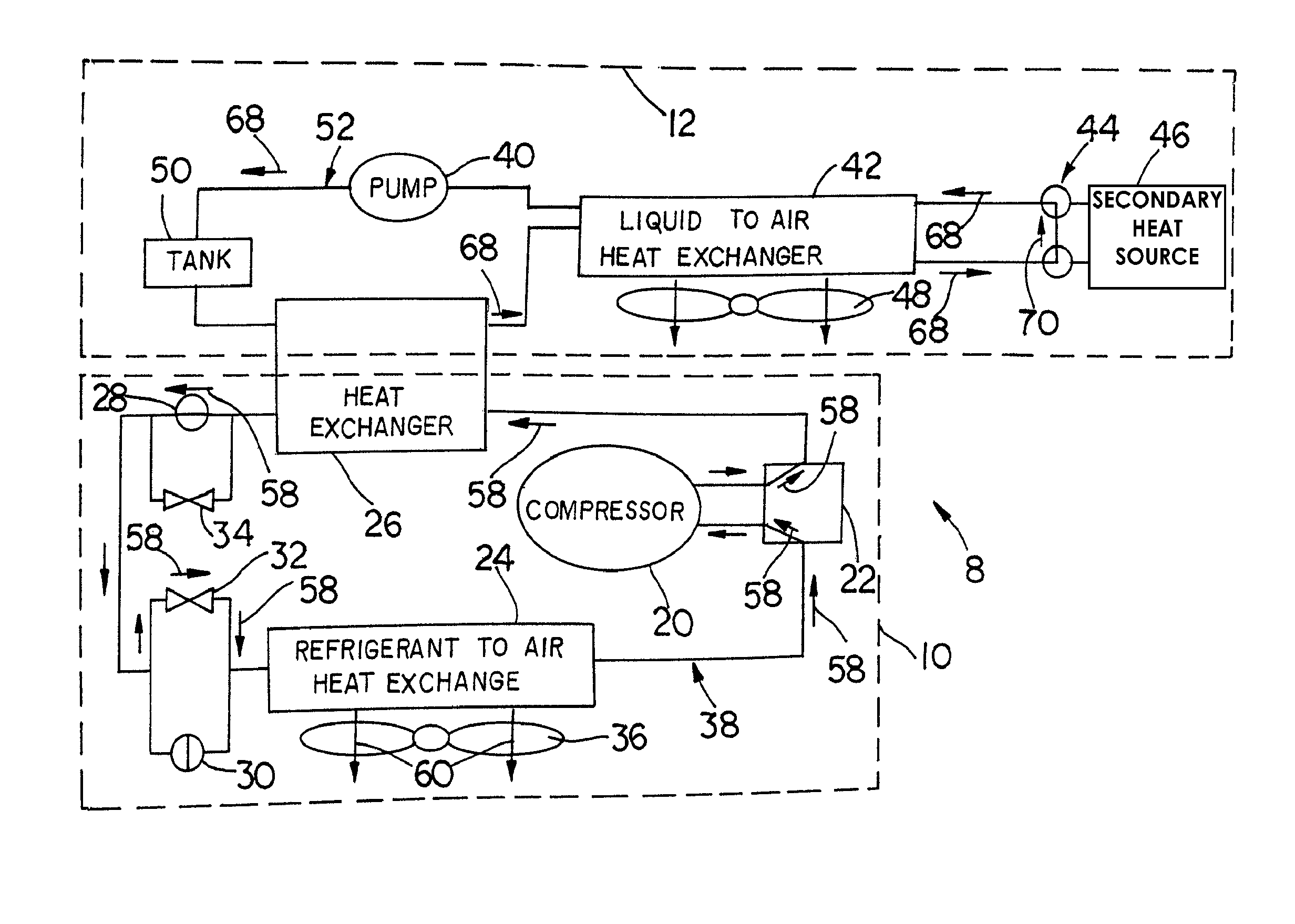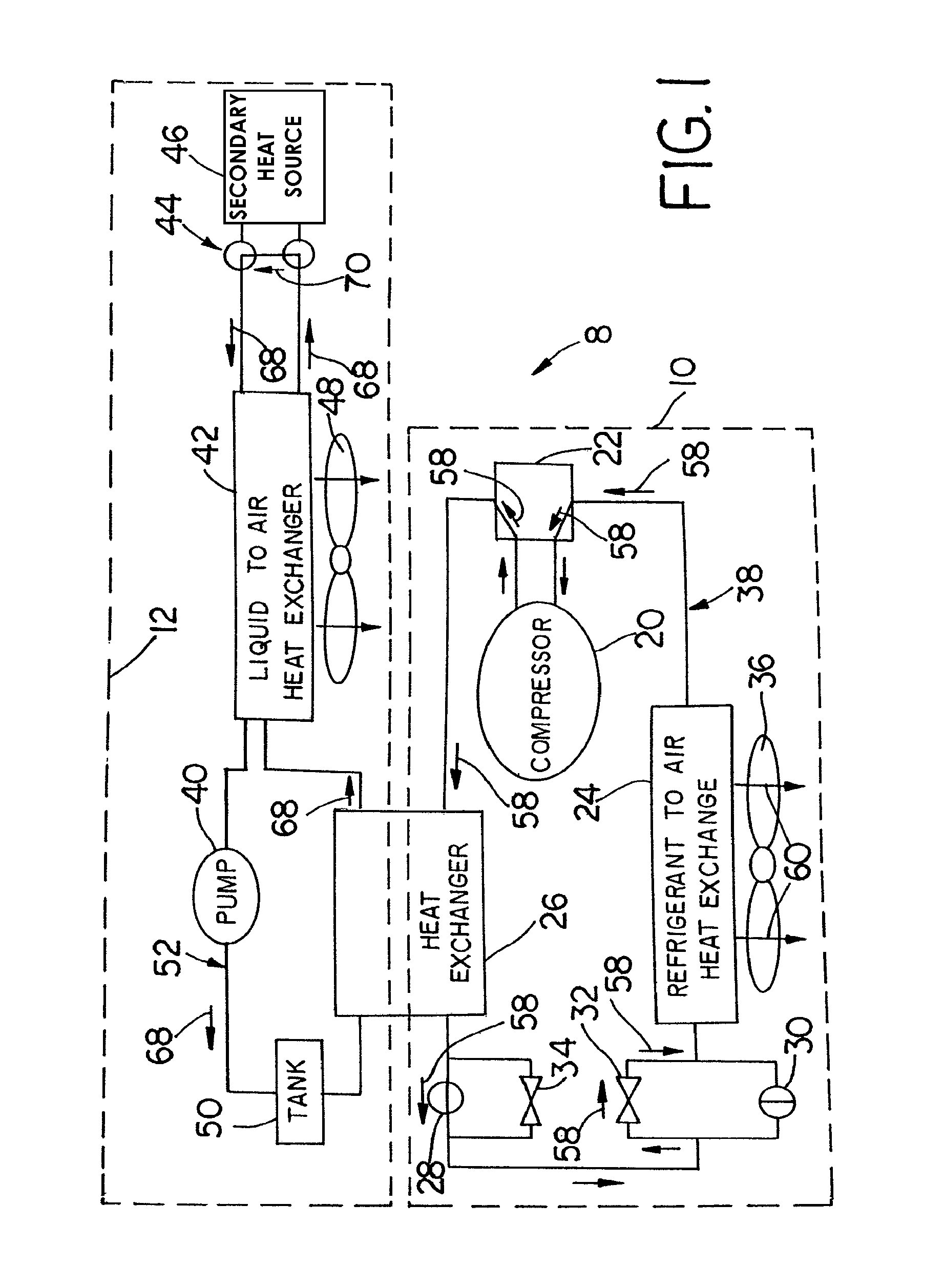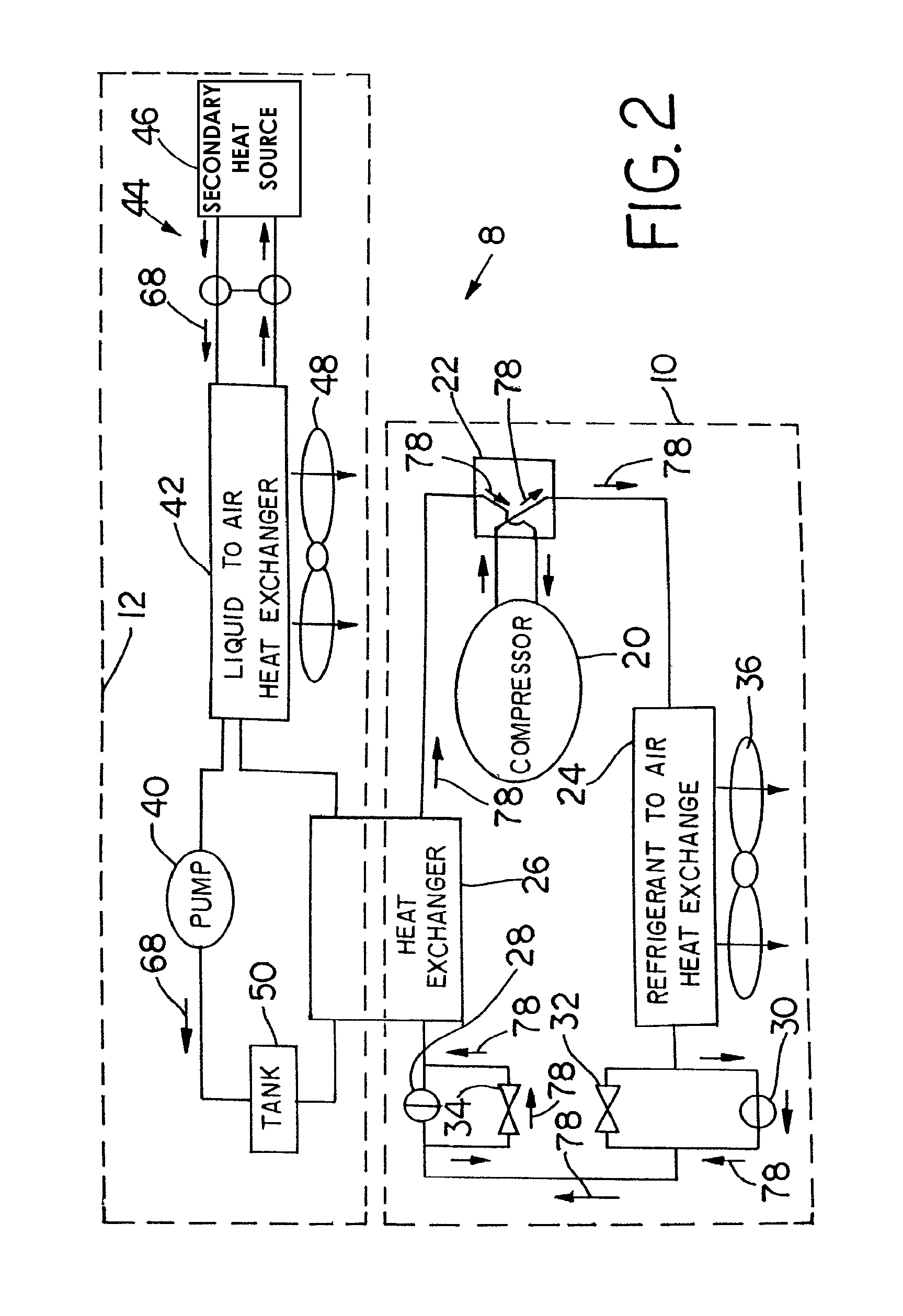Combined heating and air conditioning system for vehicles
a technology for air conditioning systems and vehicles, applied in refrigeration machines, light and heating equipment, transportation and packaging, etc., can solve the problems of wasting money, the cooling system cannot cool the passenger compartment, and the engine is turned off, so as to increase the efficiency of heating mode
- Summary
- Abstract
- Description
- Claims
- Application Information
AI Technical Summary
Benefits of technology
Problems solved by technology
Method used
Image
Examples
Embodiment Construction
[0023]FIG. 1 illustrates a simplified block diagram of a preferred embodiment of a heating, ventilation and air conditioning system (HVAC system), indicated as a whole as 8, for heating, ventilating and cooling a passenger compartment of a vehicle, preferably a passenger compartment of a bus. For the heating and cooling functions, the HVAC system 8 utilizes a primary heating and air condition loop (hereinafter the primary loop), indicated as a whole as 10, that is assisted by a parallel secondary heating and cooling loop (hereinafter the secondary loop), indicated as a whole as 12. The primary loop 10 is a heating and air conditioning heat pump system utilizing a high pressure refrigerant process to either heat or cool the passenger compartment. A heat pump operates to transfer heat from one medium to another. The secondary loop 12 is a low pressure liquid system that selectively transfers heat from or to the primary loop 10.
[0024]The primary loop 10 is a high pressure refrigerant h...
PUM
 Login to View More
Login to View More Abstract
Description
Claims
Application Information
 Login to View More
Login to View More - R&D
- Intellectual Property
- Life Sciences
- Materials
- Tech Scout
- Unparalleled Data Quality
- Higher Quality Content
- 60% Fewer Hallucinations
Browse by: Latest US Patents, China's latest patents, Technical Efficacy Thesaurus, Application Domain, Technology Topic, Popular Technical Reports.
© 2025 PatSnap. All rights reserved.Legal|Privacy policy|Modern Slavery Act Transparency Statement|Sitemap|About US| Contact US: help@patsnap.com



